- Pictures
- 56th Pottenger-Pottinger Reunion by Geralyn Pottinger Ellis, Oct 8, 2022
- Bill Reynolds Announces 56th Pottenger-Pottinger Reunion
- Pottenger-Pottinger 55th Reunion by Geralyn Pottinger Ellis, Oct 12, 2019
- Pottenger-Pottinger 55th Reunion, October 12, 2019
- 54th Pottenger-Pottinger Reunion by Geralyn Pottinger Ellis
- 54th Pottenger-Pottinger Reunion Toys by Lula Reynolds, Oct 13, 2018
- 54th Pottenger-Pottinger Reunion, Oct 13, 2018
- 53rd Pottenger-Pottinger Reunion by Geralyn Pottinger Ellis, Oct 14, 2017
- 53rd Pottenger-Pottinger Reunion, Oct 14, 2017
- LB Pottinger in WWII
- 1983 Gethsemane map by LB Pottinger
- 52nd Pottenger-Pottinger Reunion, Oct 8, 2016
- The Kentucky Standard, Nov 6, 2015 newspaper article (provided by Ron Pottinger)
- Capt Samuel Pottenger, commemorative marker ceremony, Oct 10, 2015
- 51st Pottenger-Pottinger Reunion, Oct 10, 2015
- Captain Samuel
- 50th Pottenger-Pottinger Reunion, Story by Ron Pottinger
- 50th Pottenger-Pottinger Reunion, Oct 13, 2014
- Gethsemane Distillery, 1872-1961
- Painting by Eula Pottinger La Croix
- Pottinger History, Thomas Lewis Patriot Grave Marking
- Pottenger-Pottinger in the News
- Pottenger-Pottinger Cemetery, Gethsemane
- Walnut Hill being torn down, 1939
- Capt Samuel Pottenger (1754-1831)
- Mariman Greenup Pottinger, Confederate Sympathizer
- Pottinger Coat of Arms
- What is "Second Cousin Once Removed"?
- Capt Samuel Pottenger's Clash with an Angry Bear, 1785
- Samuel Pottinger Names New Haven (published in the Ky Standard newpaper, 1985)
- The Big Meat Cabin of Capt Pottenger (published in Ky Standard newspaper, 1985)
- While Other Men Dreamed, Pottenger's Home Took Shape (published in Ky Standard newspaper, 1985)
- Pottinger's Home was Finest in State (published in Ky Standard newspaper, 1985)
- Samuel Pottenger and Walnut Hill (published in Ky Standard newspaper, 1985)
- Beechmont Women's Club, 2014
- Visit to Gethsemane (where old RR Station was located), Apr 7, 2014
- Visit to old Pottenger Cemetery, Gethsemane, Ky, Apr 7, 2014
- Visit to GW Pottenger's Old Homestead near Gethsemane, Ky, Apr 7, 2014
- Photo Album of Momma's Photos that came from Walnut Hill (middle 1800's, early 1900's)
- Pottenger-Pottinger Reunion, 1923
- Pottenger-Pottinger Reunion, 1925
- Pottenger-Pottinger Reunion, 1936
- Pottinger Get-Together at Sam Crowe's, 1953
- Pottenger-Pottinger Reunion, 1965
- Pottenger-Pottinger Reunion, 1966
- Pottenger-Pottinger Reunion, 1967
- Pottenger-Pottinger Reunion, 1968
- Pottenger-Pottinger Reunion, 1969
- Pottenger-Pottinger Reunion, 1970
- Pottenger-Pottinger Reunion, 1971
- Pottenger-Pottinger Reunion, 1972
- Pottenger-Pottinger Reunion, 1973
- Pottenger-Pottinger Reunion, 1974
- Pottenger-Pottinger Reunion, 1975
- Pottenger-Pottinger Reunion, 1976
- Pottenger-Pottinger Reunion, 1977
- Pottenger-Pottinger Reunion, 1978
- Pottenger-Pottinger Reunion, Bardstown, Ky, 1979 (photos by Linda Sellers Foster)
- Pottenger-Pottinger Reunion, 1980
- Pottenger-Pottinger Reunion, 1981
- Pottenger-Pottinger Reunion, 1982
- Pottenger-Pottinger Reunion, 1983
- Pottenger-Pottinger Reunion, 1984
- Pottenger-Pottinger Reunion, 1985
- Pottenger-Pottinger Reunion, 1986
- Pottenger-Pottinger Reunion, 1987
- Pottenger-Pottinger Reunion, 1988
- Pottenger-Pottinger Reunion, 1989
- Pottenger-Pottinger Reunion, 1990
- Pottenger-Pottinger Reunion, 1991
- Pottenger-Pottinger Reunion, 1992
- Pottenger-Pottinger Reunion, 1993
- Pottenger-Pottinger Reunion, 1994
- Pottenger-Pottinger Reunion, 1995
- Pottenger-Pottinger Reunion, 1996
- Pottenger-Pottinger Reunion, 1997
- Pottenger-Pottinger Reunion, 1998
- Pottenger-Pottinger Reunion, 1999
- Pottenger-Pottinger Cookout, 2000
- Pottenger-Pottinger Reunion, 2000
- Pottenger-Pottinger Cookout, 2001
- Pottenger-Pottinger Reunion, 2001
- Pottenger-Pottinger Cookout, 2002
- Pottenger-Pottinger Reunion, 2002
- Pottenger-Pottinger Reunion, 2003
- Pottenger-Pottinger Cookout, 2004
- Pottenger-Pottinger Reunion, 2004
- Pottenger-Pottinger Reunion, 2005
- Pottenger-Pottinger Reunion, 2006
- Pottenger-Pottinger Reunion, 2007
- Pottenger-Pottinger Reunion, 2008
- Pottenger-Pottinger Reunion, 2009
- Pottenger-Pottinger Reunion, 2010
- Pottenger-Pottinger Reunion 2011
- Pottenger-Pottinger Reunion 2012
- Pottenger-Pottinger Reunion 2013
|
|
| Capt Samuel Pottenger (1754-1831) |
| (Slide Show / Regular View / 2 Columns / Thumbnails)
|
 | 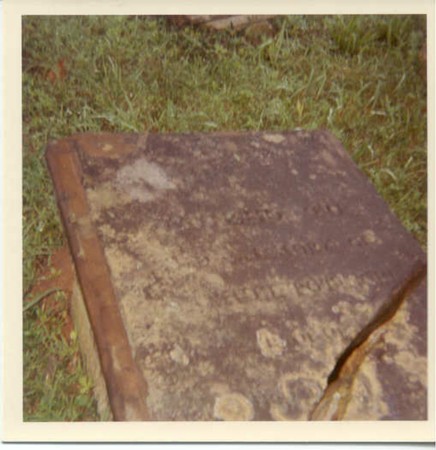 | Original tombstone of Capt Samuel Pottinger
Capt Samuel Pottenger
Capt Samuel Pottenger, born at "Parrott's Manor", in Prince George's County, Maryland, April 29, 1754; served in Capt Samuel Lapsley's Company, Col Nathaniel Gist's regiment of Continental troops in the Revolutionary War; also in Capt William Harrod's Company of the "Pioneer Soldiers of Kentucky"; Captain in the "Militia Muster" (Kentucky Militia); pioneer settler and founder of "Pottenger's Station" (fort) in the spring of 1781, in Nelson County, Kentucky; died January 20, 1831, and is buried in Cox's Creek church cemetery, near Bardstown, Kentucky; married (firstly) Jane (nee Gray) Withrow Gilkey, circa 1782; married (secondly) Jenny (Caldwell) Logan, of Washington County, Kentucky, in January 1799, widow of Robert Logan, her cousin, daughter of Robert and Mary (Logan) Caldwell, sister of Gen John Caldwell, Lieutenant-Governor of Kentucky in 1804, and niece of Gen Benjamin Logan, pioneer settler and founder of "St Asaph's Station" in Lincoln County, Kentucky, in 1775. (Information from "Colonial Families of the United States of America", Volume 2, page 598).
Capt Sam (as he was called) came from Maryland to Virginia at age 19 and prospected and hunted with James Harrod, founder of Harrodsburg, Kentucky. Immigrated to Kentucky about 1775, founded Pottenger’s Landing (which he renamed New Haven in 1781), settled on Pottenger's Creek (named for him), where he entered about 1200 acres of land and built Pottenger’s Station (fort). Sent back to Maryland and Virginia to gather up uncles, brothers and one sister. He reared a family of three sons and three daughters.
Owned the earliest distillery in the Nelson County area. It was located across from the spring at "Walnut Hill". Around Civil War days the TJ Pottenger & Company Distillery was east of the L&N Depot at Gethsemane, Nelson County, Kentucky. (Information in a 1869 letter from Butler Remey Pottinger to TJ Pottenger,).
Down the road from Pottenger's Station (Fort) was the Pottenger's Creek Separate Baptist Church that was constituted in 1785.
POTTENGER'S STATION
Capt Samuel Pottenger of Prince Georges County, Maryland, established a station in 1781, about a half a mile north of the present Gethsemane (Nelson County) post office and half a mile south of Gethsemani Abbey. (This station, or fort as sometimes called was 3 9/10 miles from the main street corner of New Haven (or Pottinger's Landing as it was first called by Col Samuel Pottinger). The fort was 158 feet from the center of the present State Highway #52). Pottenger, born April 29, 1754, to Robert and Elizabeth (Willett) Pottenger, first visited Kentucky in 1776. He served as a Revolutionary War soldier in Maryland in 1777, with James Harrod in 1778, and with William Harrod in 1780. Numerous families settled with Pottenger at his station before moving to their own land nearby. Among the settlers were Samuel Pottenger's siblings (Elizabeth, Jemima, Susannah, William, Robert, John, Dennis, Anne, and Eunice) and their uncle Samuel Pottenger with his wife and their children. A contingent of Pennsylvanians representing the Masterson family added to the station's population. Charles, John, John Jr, Jerry, and Zachariah Masterson as well as their wives and children (whose names are not compiled) lived at Pottenger's Station.
During the winter of 1782-83, the station's population swelled to include thirty-seven people from Samuel Cartwright's station, eighteen miles east. Captain Pottenger and his company had joined Gen George Rogers Clark in the fall of 1782 to invade Indian territory in the Upper Miami River drainage in retaliation for Indian raids into Kentucky earlier that year. Upon their return, they discovered that the settlers at Cartwright's Station were starving and took them to Pottenger's Station. As the country settled and the Indian threat abated, the families of Pottenger's Station moved to their own lands and many eventually resettled in the Great Miami Valley in Butler and Preble counties, Ohio (Information from "The Kentucky Encyclopedia", John E Kleber, Editor-in-Chief, Copyright 1992 by The University Press of Kentucky). (Note: It seems the ones that moved North and West retained the Pottenger name (spelled with an “e”) while the ones that stayed in Kentucky changed the spelling to Pottinger (spell with an “i”).
WALNUT HILL
He erected first brick home west of Alleghenies in 1788, called "Walnut Hill" for the native walnut used on interior. (the "Old Kentucky Home" in Bardstown, Nelson County, Kentucky also has same architecture). The site was a small hill with a never-failing spring, in a large grove of black walnut trees. Choice trees were felled, sawed into rough lumber, then allowed to season. In 1788 the brick was burned, and the house was completed. The interior woodwork was of black walnut, except the floors which were made of wide poplar boards. The doors and frames were made of solid walnut, and were very heavy. The locks, nails and hinges came from Virginia, and were made by hand and brought on horseback over the old Wilderness Road. The plastering was mixed with buffalo hair. The first floor rooms had paneled wainscoting reaching to the bottom or the windows, while those on the second floor had chair-high wallboards, instead of the full wainscoting. When "Walnut Hill" was built and for many years thereafter, a stockade for protection against Indians was around it. "Walnut Hill" was about 1/2 mile from the first fort (Pottenger's Fort) built by Capt Samuel Pottenger on Pottenger Creek, Nelson County, Kentucky in the spring of 1781. "Walnut Hill", on Pottenger's Creek, stayed in the family until the 1941, when it was sold and the brick building was demolished. The old meat smoke house and the Pottenger's Cemetery still remain on the site today. There is a plaque in the Nelson County Court House in Bardstown honoring Captain Pottenger for his contributions to the country.
Capt Sam died while visiting his daughter at Cox's Creek, Nelson County, Kentucky and thus was buried at the Cox's Creek Baptist Church Cemetery even though both of his wives were buried at "Walnut Hill", Gethsemane, Nelson County, Kentucky in the Pottenger's Cemetery near Pottenger's Creek. | | () |  | | Bill Reynolds says... | | "The year that Walnut Hill was torn down was 1939, not 1941." (5/2/14) |  |
| | | 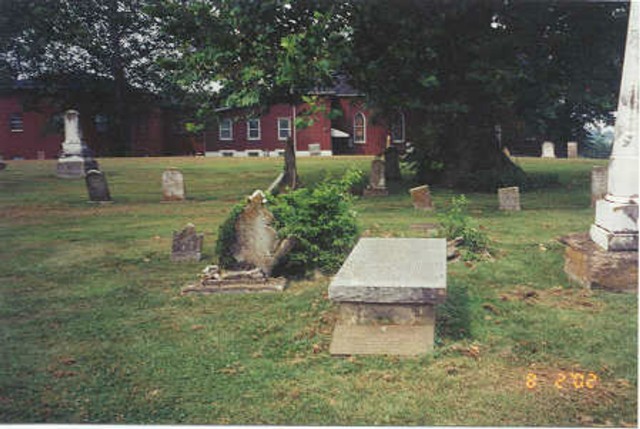 | | Burial site of Capt Samuel Pottenger at Cox's Creek Baptist Church Cemetery | | () | | | 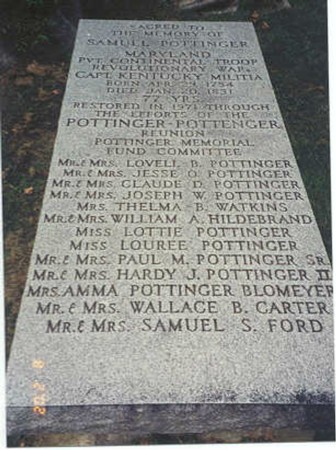 | | New Tombstone of Capt Samuel Pottenger at Cox's Creek Baptist Church Cemetery | | () | | | 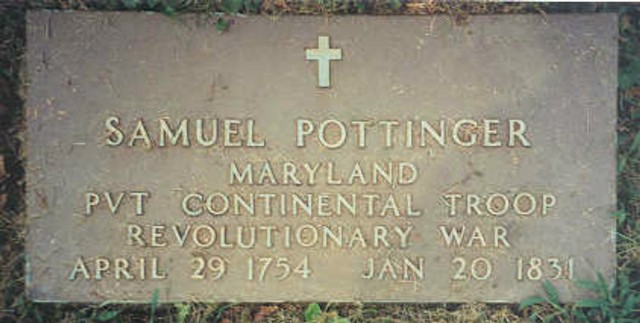 | | Footstone of Campt Samuel Pottinger, Revolutionary War veteran | | () | | | 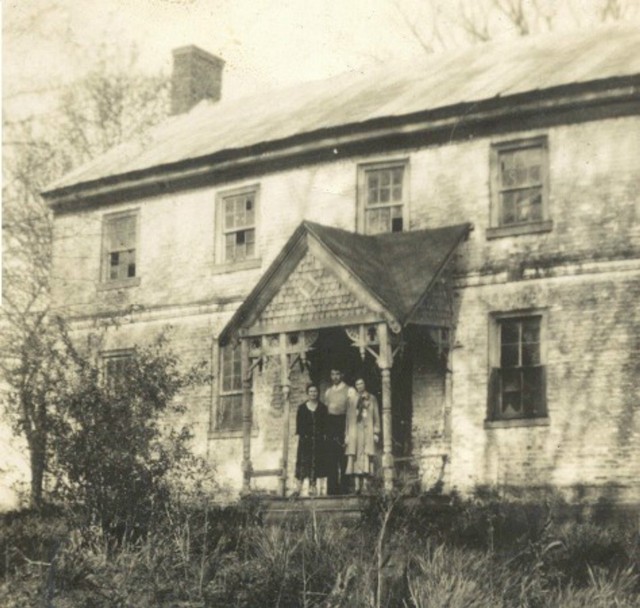 | | Walnut Hill, 1934 | | () | | |
|